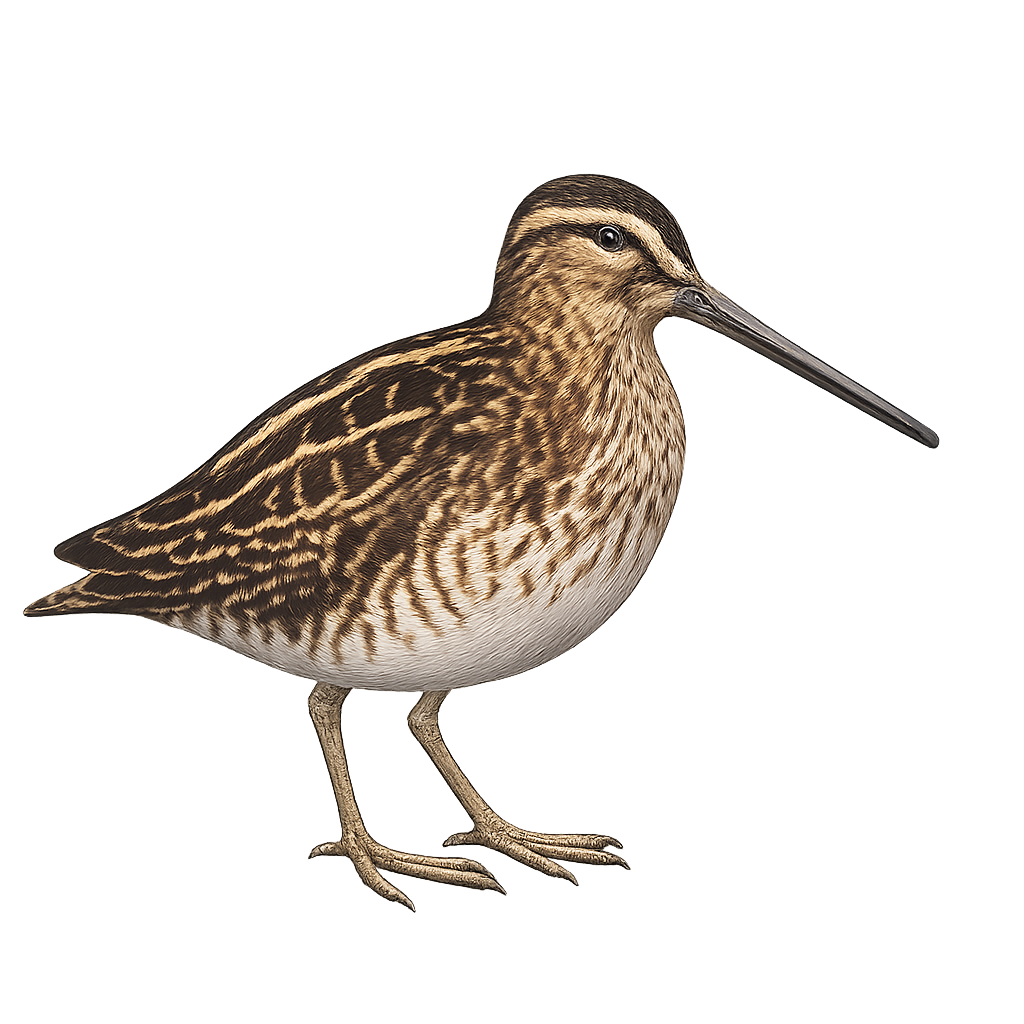Observe and photograph a species in its natural habitat
Learn where and when to observe a species in the wild, how to recognize it in the field, and what habitats it lives in. Get photography tips adapted to its behavior and capture stunning images without disturbing the animal. For full details, open the complete profile in the WildlifePhotographer app.
Great Snipe
Scientific name: Lymnocryptes minimus

IUCN Status: Least Concern
Family: SCOLOPACIDAE
Group: Birds
Shyness: Suspicious
Safe distance: 30 m
Breeding season / Courtship: 01.04-30.04
Gestation: 19 à 21 jours
Births: 20.05-21.06
Habitat:
Wetlands, marshes, and floodplain meadows
Description:
The Jack Snipe is a small, discreet wader, often difficult to spot due to its cryptic plumage that blends perfectly with its environment. This small bird, with its brown and mottled plumage, primarily inhabits marshes and bogs in Northern Europe and Asia. It feeds on invertebrates, mainly worms, insects, and mollusks, which it finds by probing the mud with its short, straight bill.
The Jack Snipe adopts a stealthy behavior and is often observed hiding in dense vegetation or freezing when threatened. While more difficult to observe due to its discretion, it is threatened by habitat loss and changes in the hydrological regime in its breeding areas.
Recommended lens:
>=300 mm
Photography tips:
Approach slowly and discreetly, using a telephoto lens to avoid disturbing the marsh sandpiper, which is often difficult to spot and can fly away quickly if it feels threatened.
Photograph early in the morning or late in the afternoon, when the light is soft and the sandpiper is more active in the marshes or wet meadows searching for food.
Capture moments of foraging: The marsh sandpiper uses its long bill to probe the mud for insects and small invertebrates, providing interesting opportunities for photography.
Be patient: This species spends a lot of time feeding, so wait until it is more visible before taking a photo.
Although the marsh sandpiper is not currently endangered, it is sensitive to disturbances in its wetland habitat, especially during the breeding season. Make sure to respect the animal's natural environment and follow local conservation rules to preserve this species.
Ready to take action?
Choose your platform and start your free trial today



